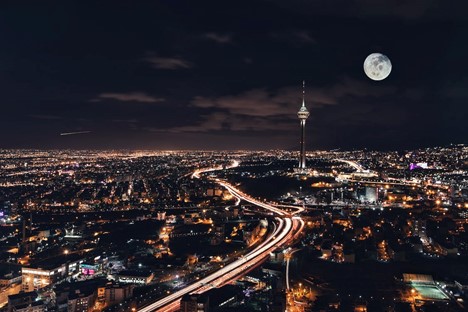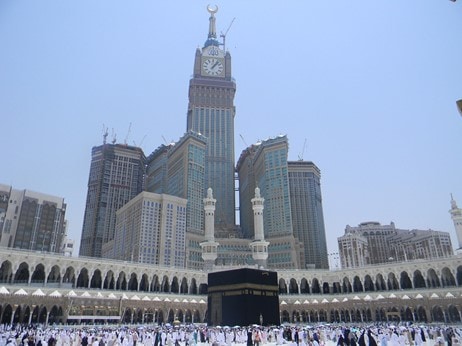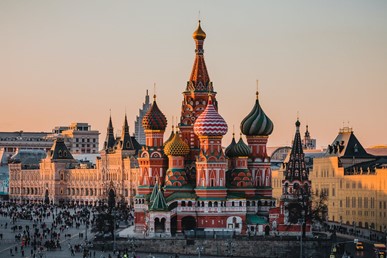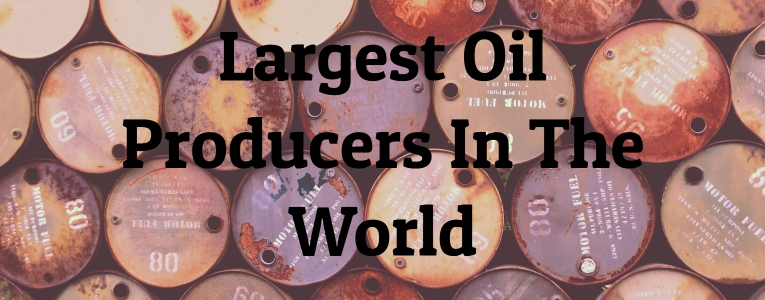The world has a vital need for oil. In most countries, the price of fuel is based on how much is being consumed by the people who need it and how much is available to supply them. Oil resources are finite and will eventually run out.
The largest oil producers in the world production of oil are measured in barrels per day (BPD), meaning that every day, these companies produce more oil than the entire world does in an entire year.
The question of who is the largest oil producer in the world is a complicated one. Due to the number of players in the sector and how production has changed over time, there is no single answer to this question.
It is necessary to know all the key data about oil production if you want to get a better understanding of global energy markets and how they’re evolving.
The world’s largest oil producers are listed in this article. The list covers several countries and regions home to the major oil-producing areas. These countries contribute significantly to the world oil supply, which is why they are considered the top 10 largest oil producers.
-
Kuwait
Capital City: Kuwait City
Population: 4.33 million as of 2021
Gross Domestic Product: $106 billion as of 2020
 Source: Pexels
Source: Pexels
The first country in the top 10 oil-producing nations is Kuwait, which dropped production for the third consecutive year between 2018 and 2021.
In 2018, the nation produced 3,059,000 BPD, but that number dropped to 3,017,000 BPD in 2019. The minor rebound achieved in 2018 followed another drop in output in 2019.
Nowadays, it has been a rough 2.5 million BPD.
Did You Know?
The oil industry in Kuwait is responsible for approximately 60 percent of the country’s GDP and an even larger share of the country’s export revenues, which account for approximately 95 percent.
-
Iran
Capital City: Tehran
Population: 85.03 million as of 2021
Gross Domestic Product: $231.5 billion as of 2020
 Source: Pexels
Source: Pexels
The Energy Information Administration estimates Iran has the world’s second-biggest natural gas reserves and the third-largest known oil reserves.
Sanctions imposed by the United States and tensions in the area have combined to make Iran’s energy-producing industry more difficult.
Recently, China and Iran agreed on commerce and security that would last for the next 25 years. China has since called on the United States to lift the sanctions.
Did You Know?
Iran’s oil output has significantly decreased over the last several years, despite the country’s enormous reserves; in 2017, Iran produced 4,779,000 barrels per day (BPD).
-
Brazil
Capital City: Brasilia
Population: 214 million as of 2021
Gross Domestic Product: $1.609 trillion as of 2021
 Source: Pexels
Source: Pexels
Brazil is the only nation in Latin America to make it into this list. Brazil’s production of around 2.9 million barrels per day accounted for approximately 3% of the world’s total output.
Since then, both the country’s proven oil reserves and its rate of production have been on the rise. Petrobras, a firm that is supported by the Brazilian government and is extensively involved in Brazil’s domestic oil business
Most of Brazil’s oil production is concentrated on pre-salt deepwater developments in the Santos and Campos Basins, which are situated south of Rio de Janeiro in the South Atlantic Ocean.
Did You Know?
In 1995, the nation abolished the governmental monopoly that it had maintained over its exploration and production (E&P) business.
-
United Arab Emirates
Capital City: Abu Dhabi
Population: 9.99 million as of 2021
Gross Domestic Product: $358.9 billion as of 2020
 Source: Unsplash
Source: Unsplash
The United Arab Emirates is a member of OPEC and has consistently placed among the top 10 oil-producing nations in the world for the last few decades.
Most of the country’s proven oil reserves are found in Abu Dhabi, making it the eighth biggest proven oil reserve holder in the world. The country’s reserves are 98 billion barrels.
The entire reserves held by the UAE account for 5.6% of worldwide reserves.
Did You Know?
Even though it is often in partnership with international private-sector corporations in upstream activities, the Abu Dhabi National Oil Company (Adnoc), which the UAE’s government controls, maintains authority over most of the country’s oil reserves.
-
People’s Republic of China
Capital City: Beijing
Population: 1.41 billion as of 2021
Gross Domestic Product: $17.73 trillion as of 2021
 Source: Unsplash
Source: Unsplash
In 2019, China produced little about 3.8 million barrels per day, which was equivalent to a 4% share of the total worldwide output.
Large state-owned businesses, such as China National Offshore Oil Corporation, Sinopec, and China National Petroleum Corporation, control the majority of production in the nation.
The United States is the country’s greatest user of oil, while China is the world’s second-largest consumer of the commodity. China gets most of its crude supply from other countries, mostly Saudi Arabia and Russia.
Did You Know?
According to Reuters, China’s crude oil refineries have been lowering output owing to COVID-19 lockdowns throughout the first few months of 2022. This comes as the virus undermines the government’s objective of achieving zero COVID in the country.
-
Iraq
Capital City: Baghdad
Population: 41.18 million as of 2021
Gross Domestic Product: $207.9 billion as of 2021
 Source: Unsplash
Source: Unsplash
Iran, a founding member of the Organization of the Petroleum Exporting Countries (Opec), accounted for around 3.7% of the world’s total oil production in 2019, with a national output that totaled more than 3.5 million barrels per day (BPD).
Although the country has over 10 percent of the world’s known oil reserves, the country has been prohibited from fully realizing the commercial potential of its oil riches as a result of the stringent economic sanctions placed in response to its nuclear weapons development.
Did You Know?
The National Iranian Oil Company, which is owned by the Iranian government and has its headquarters in Tehran, is in charge of the country’s extensive oil (and gas) reserves.
-
Canada
Capital City: Ottawa
Population: 38.25 million as of 2021
Gross Domestic Product: $1.99 trillion as of 2021
 Source: Unsplash
Source: Unsplash
Canada is the next country when it comes to the top nations that produce the most oil. The bulk of Canada’s overall energy exports goes to the United States.
Canada is working to diversify its trade partners for various reasons, including political and economic ones. In particular, the country is looking to strengthen its relations with growing economies in Asia.
Did You Know?
According to the government of Alberta’s province, oil sands make up 97 percent of the province’s proven oil reserves. Alberta is home to almost all of Canada’s proven oil reserves, and these deposits are situated in Alberta.
-
Kingdom of Saudi Arabia
Capital City: Riyadh
Population: 35.34 million as of 2021
Gross Domestic Product: $833.5 billion as of 2021
 Source: Pixabay
Source: Pixabay
The country’s oil and gas industry is responsible for around 85 percent of the country’s total export profits and approximately half of the country’s gross domestic GDP.
Saudi Arabia was a significant contributor to the decision that OPEC made in 2020 to reduce the amount of oil it produced.
The nation decided to cut output by over 3 million barrels per day to comply with the terms of an agreement that was inked with OPEC partners.
Did You Know?
In 2022, the ties between the nation and the US have deteriorated to the extent wherein the Middle Eastern monarchy seems unlikely to raise output in an attempt to bring the growing price of gasoline down.
-
Russian Federation
Capital City: Moscow
Population: 143.4 million as of 2021
Gross Domestic Product: $1.776 trillion as of 2021
 Source: Pexels
Source: Pexels
Before the production restrictions in 2020, Russian oil productivity had been steadily increasing for quite some time; in 2018, it reached 10,778,000 BPD.
Russia is the second largest oil-producing country in the world and is responsible for ten percent of the total production.
Did You Know?
As retaliation for Russia’s involvement in the conflict in Ukraine, the United States, Canada, Australia, and the United Kingdom have all placed bans on the purchase of Russian oil. Together, these countries account for around 13% of Russia’s total exports.
-
United States of America
Capital City: Washington, DC
Population: 331.9 million as of 2021
Gross Domestic Product: $23 trillion as of 2021
 Source: Unsplash
Source: Unsplash
The United States of America is the largest oil producer in the world. The Land of the Free is referred to as a swing producer because its output moves up and down in tandem with market pricing.
The oil production in Texas is about four times more than New Mexico’s, which comes in as the second-largest oil-producing state in the country.
Did You Know?
The United States is also the leading producer of natural gas in the world, a position that was made possible by the development and proliferation of shale fracturing technology.
RELATED READINGS
10 Largest Oil Reserves in the World
10 Largest Oil Companies in the World
9 Largest Oil Spills in the World
12 of the Oldest Gas Pumps Ever Created
12 Most Expensive Essential Oils in the World
